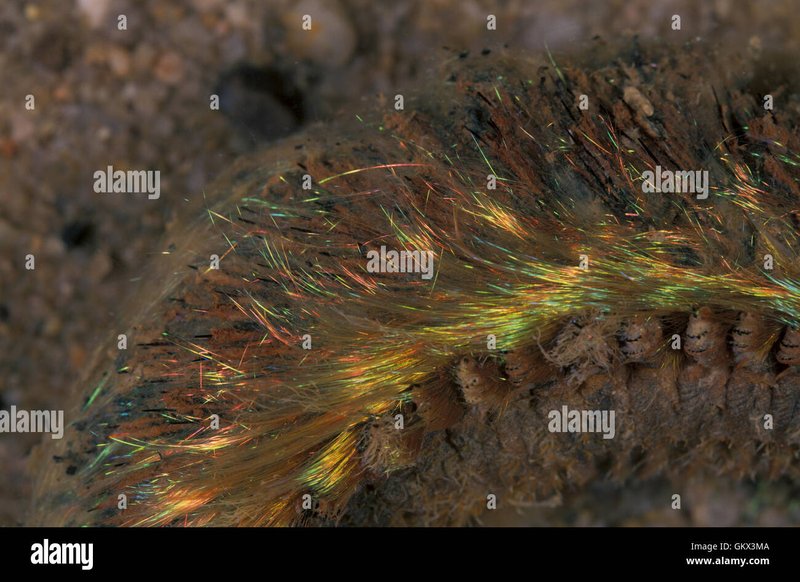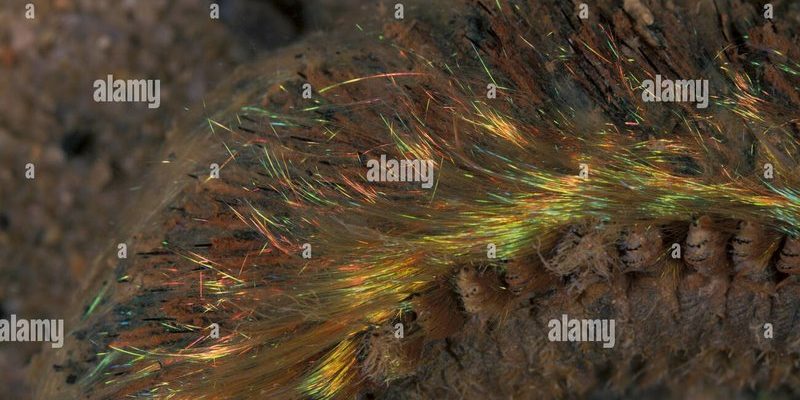
In the world of marine biology, field identification isn’t always straightforward. The Aphrodite aculeata can easily become a point of confusion, especially for beginners. With its striking coloration and intricate features, it’s not just about spotting it; it’s also about correctly identifying it among a variety of similar-looking species. So, let’s dive deep into the challenges of spotting the thorny seahorse and explore some nifty tricks to make that identification a bit easier.
Understanding the Habitat of Aphrodite Aculeata
Before heading out to spot the Aphrodite aculeata, it helps to know where it hangs out. These seahorses are often found in shallow coastal waters, typically near reefs, seagrass beds, and mangroves. Just think of them as the social butterflies of the underwater world—they thrive in areas with lots of plants and places to hide.
You might be wondering why these settings are so important. Well, the seagrass not only provides shelter but also serves as a hunting ground for tiny crustaceans that make up a significant part of their diet. When you’re out searching, look for these lush environments. If you can spot a healthy seagrass bed, there’s a good chance the thorny seahorse is nearby, basking in the safety of its surroundings.
However, it’s not just about where to look; it’s also when you look. Early morning or late afternoon are often the best times since the lighting can enhance your visibility. So, plan your outings for these times to increase your chances of spotting one.
Coloration and Camouflage
Aphrodite aculeata has incredible coloring that helps it blend right in with its environment. These seahorses can showcase a range of hues, from vibrant greens to soft browns and even stunning yellows. Imagine you’re in a vibrant art gallery where every piece adapts to its surroundings—this is how the thorny seahorse plays its role.
This camouflage makes identification tricky for beginners. You might see a flash of color that catches your eye, but before you can confirm what it is, a wave could wash it away from view. To better identify them, focus on their distinct physical features, like the spiny protrusions along their backs, which are unique to this species. These spikes can resemble tiny horns, helping distinguish them from other seahorses.
When you spot a seahorse, try to remember the surroundings. If it seems to melt seamlessly into the backdrop, it could very well be an Aphrodite aculeata. Once you train your eye to recognize the characteristics of these beauties, you’ll feel more confident in your identification skills.
Behavioral Patterns to Observe
Understanding the behavior of the Aphrodite aculeata offers another layer to your identification toolkit. These seahorses are not the most active swimmers; instead, they tend to anchor themselves to coral or seagrass using their tails. This behavior of hitching a ride makes it easier to spot them—just look for areas of vegetation that appear to have something unusual hanging out.
One common behavior you’ll notice is how they sway gently with the current. It’s almost like they’re dancing with the ocean! Pay attention to these subtle movements. If you see something moving smoothly alongside the plants, there’s a good chance it’s a thorny seahorse and not a piece of floating debris.
Additionally, if you observe mating rituals, you might notice the males and females perform intricate dances that involve twirling around each other. These scenarios can help with identification, as the male often has a pouch for carrying the young, which is a key detail distinguishing it from other species.
Common Misidentifications
One of the main challenges in identifying the Aphrodite aculeata is the presence of other seahorse species that closely resemble it. For instance, the common seahorse and the pocket seahorse share similar habitats and features. To differentiate between them, you’ll need to focus on specific traits.
The common seahorse usually has a more elongated body, while the Aphrodite aculeata tends to be a bit stockier. Additionally, you can examine their dorsal fins—this is where you’ll find distinct patterns that can help solidify your ID. If you’re struggling, consider having a small guidebook or a marine identification app on hand. This can be especially helpful when you’re out in the field and need a quick reference.
It can also be helpful to remember that while Aphrodite aculeata typically prefers shallower waters, other seahorse species may venture a bit deeper. Don’t be afraid to ask local marine biologists or guides for their input. They often have valuable insights that can help you become a better identifier.
Tools and Techniques for Identification
Having the right tools can make a world of difference in your identification efforts. A good pair of underwater binoculars or goggles can enhance your visibility, allowing for better observation without disturbing the environment. Honestly, these tools can feel like a secret weapon in your marine exploration arsenal.
Another handy technique is to carry a notepad or smartphone app for recording your observations. Note the surroundings, behavior, and any unique features you see. This not only helps you remember specifics but also allows you to improve over time. What better way to track your growth as a spotter?
If you’re keen on photography, an underwater camera can be a game-changer. By capturing images, you can analyze the seahorse later and compare details with your guides. Plus, you’ll have a cool collection of memories from your adventures.
Respectful Observation Practices
When out searching for the Aphrodite aculeata, it’s vital to practice respectful observation. These seahorses, like many marine creatures, face threats from habitat loss and pollution. So, it’s important to appreciate them from a distance without disrupting their natural behaviors.
Remember to tread lightly in their habitats. Avoid trampling over seagrass or coral, as this can damage their ecosystems. If you’re using any equipment, ensure it’s not harming the environment. Think of yourself as a guest in their home, and act accordingly.
Also, be mindful of the impact of flash photography. Bright lights or sudden movements can startle them, causing stress. Instead, use natural light whenever possible and take your time to adapt to their surroundings. By being a mindful observer, you contribute positively to the marine ecosystem while also enhancing your spotting experience.
Final Thoughts on Spotting the Aphrodite Aculeata
Spotting the Aphrodite aculeata is not just about finding a unique creature; it’s about honoring the rich and delicate ecosystems they inhabit. While field identification can be challenging due to their camouflaging skills and resemblance to other species, understanding their behavior, habitat, and seasonal patterns helps tremendously.
So the next time you find yourself at the beach or diving into the ocean, take a moment to appreciate the wonders of the underwater world. With patience, curiosity, and a little practice, you’ll soon be on your way to becoming a confident identifier of the thorny seahorse and its fellow marine marvels. Happy spotting!

